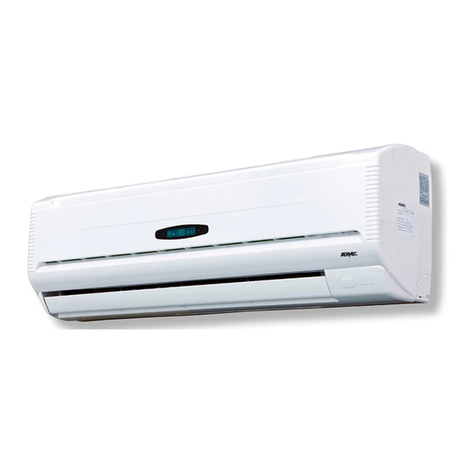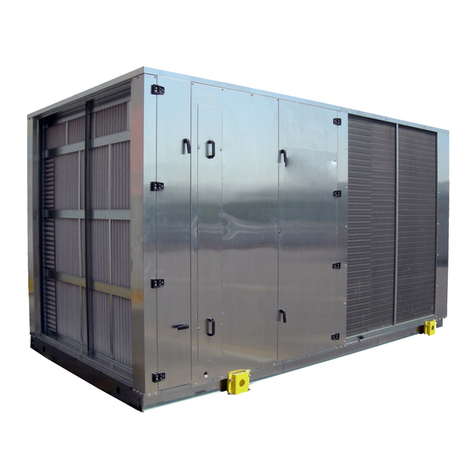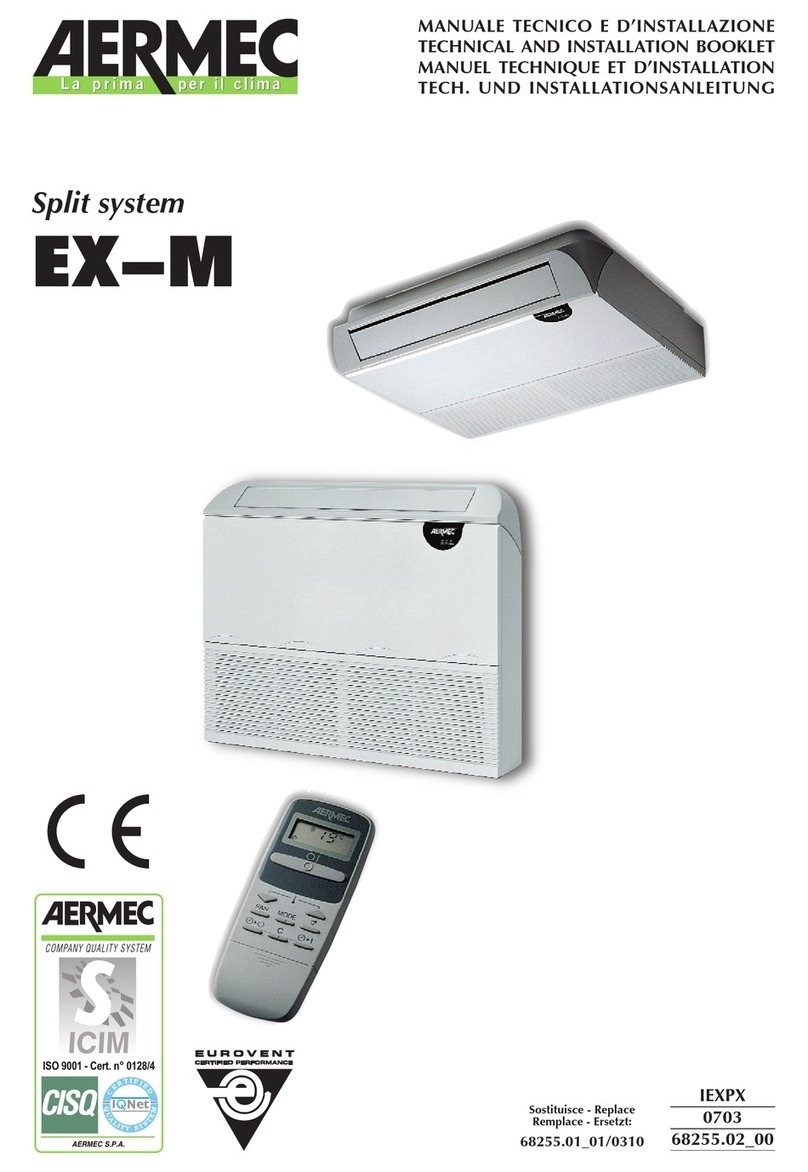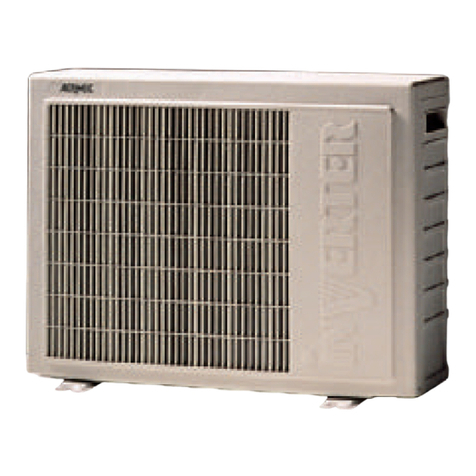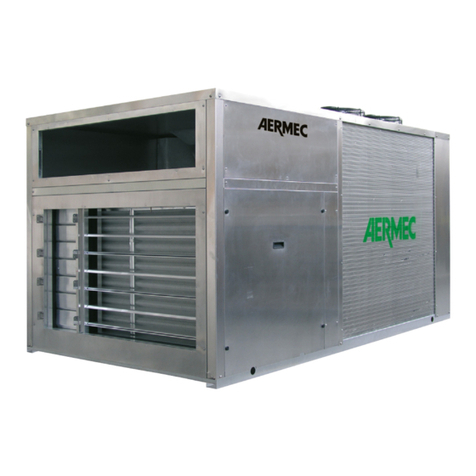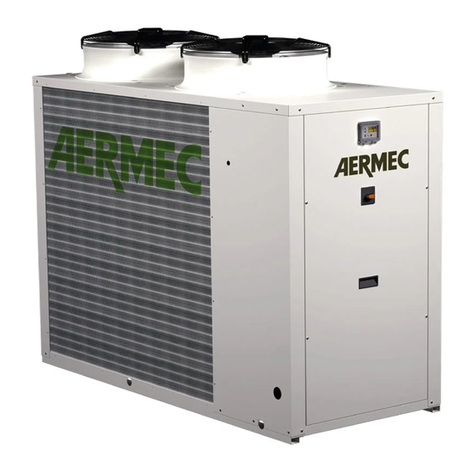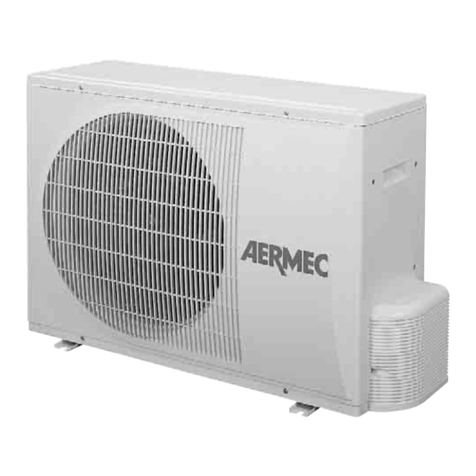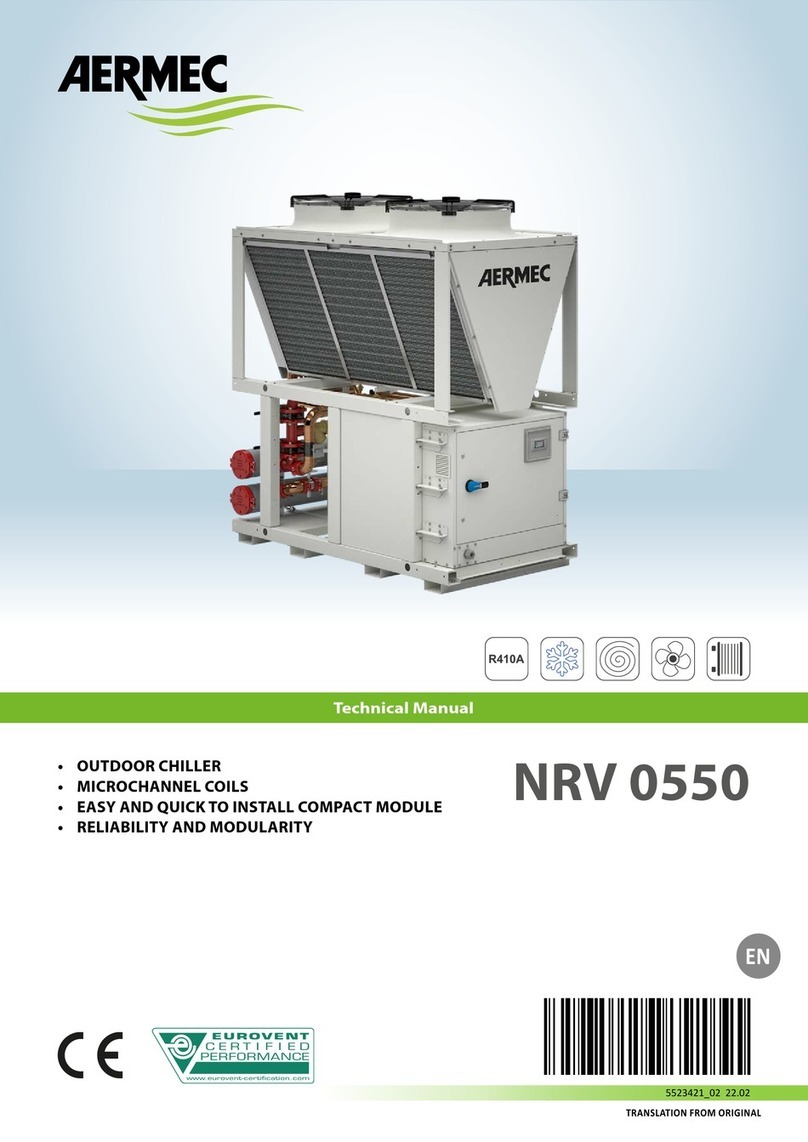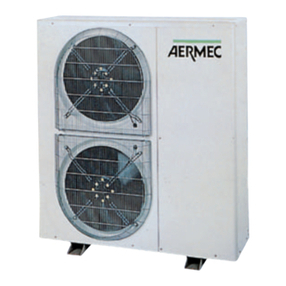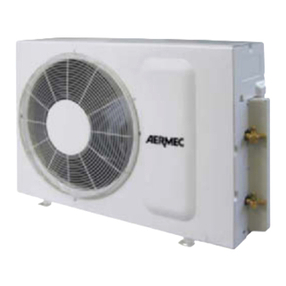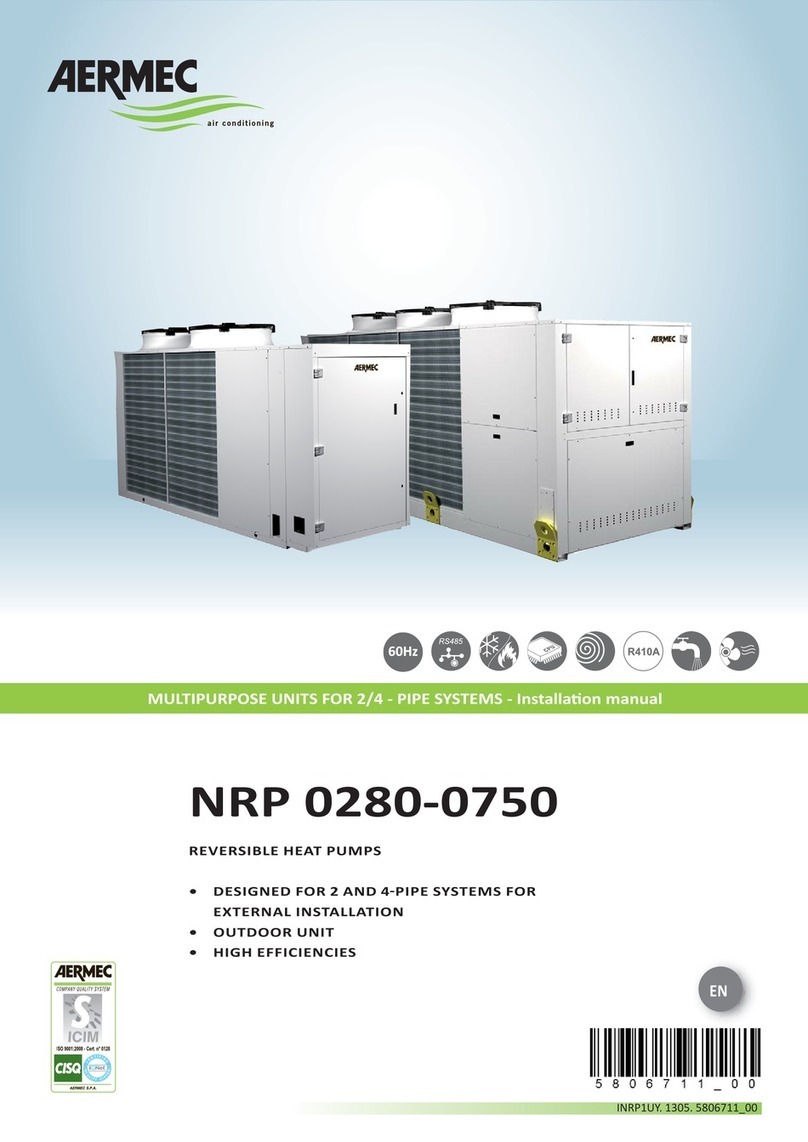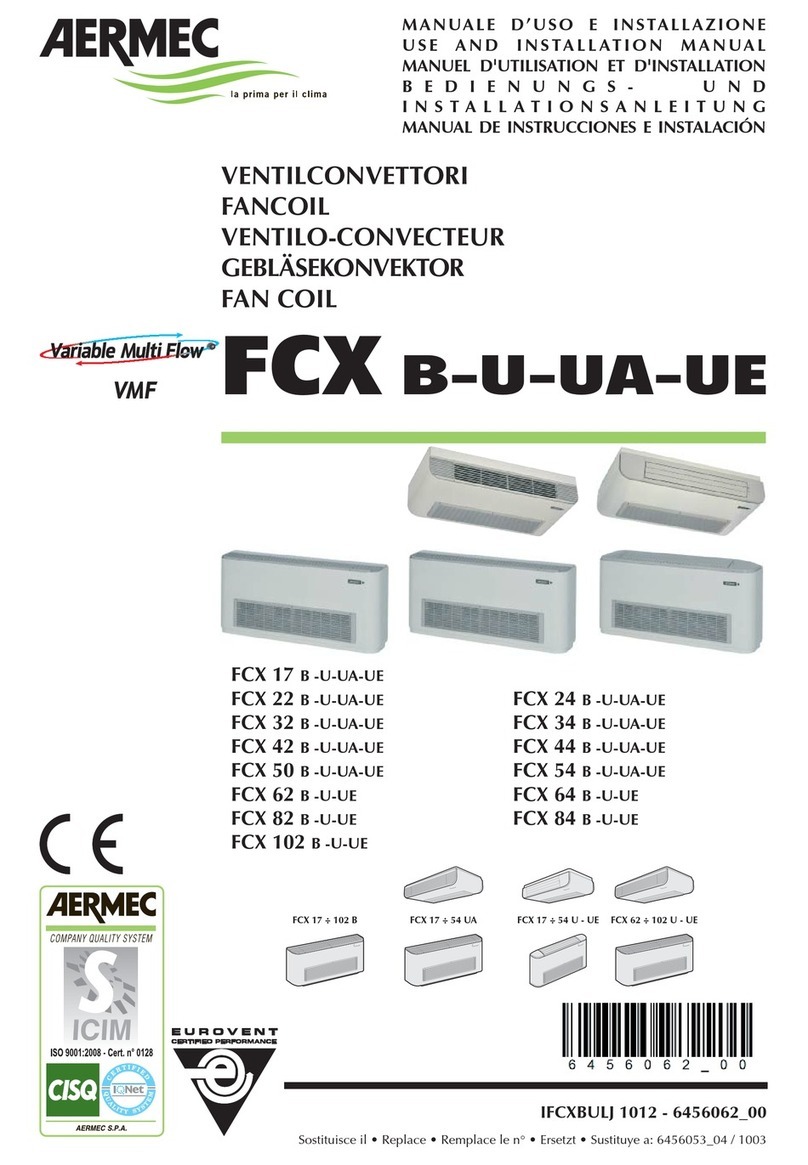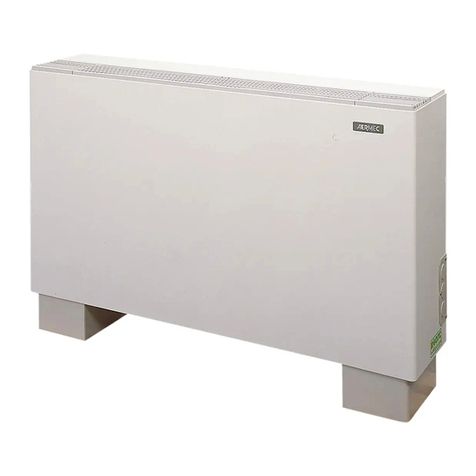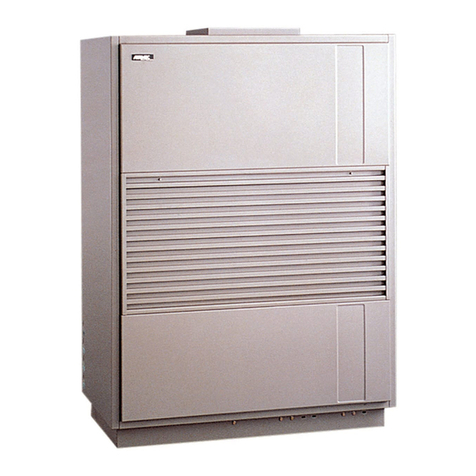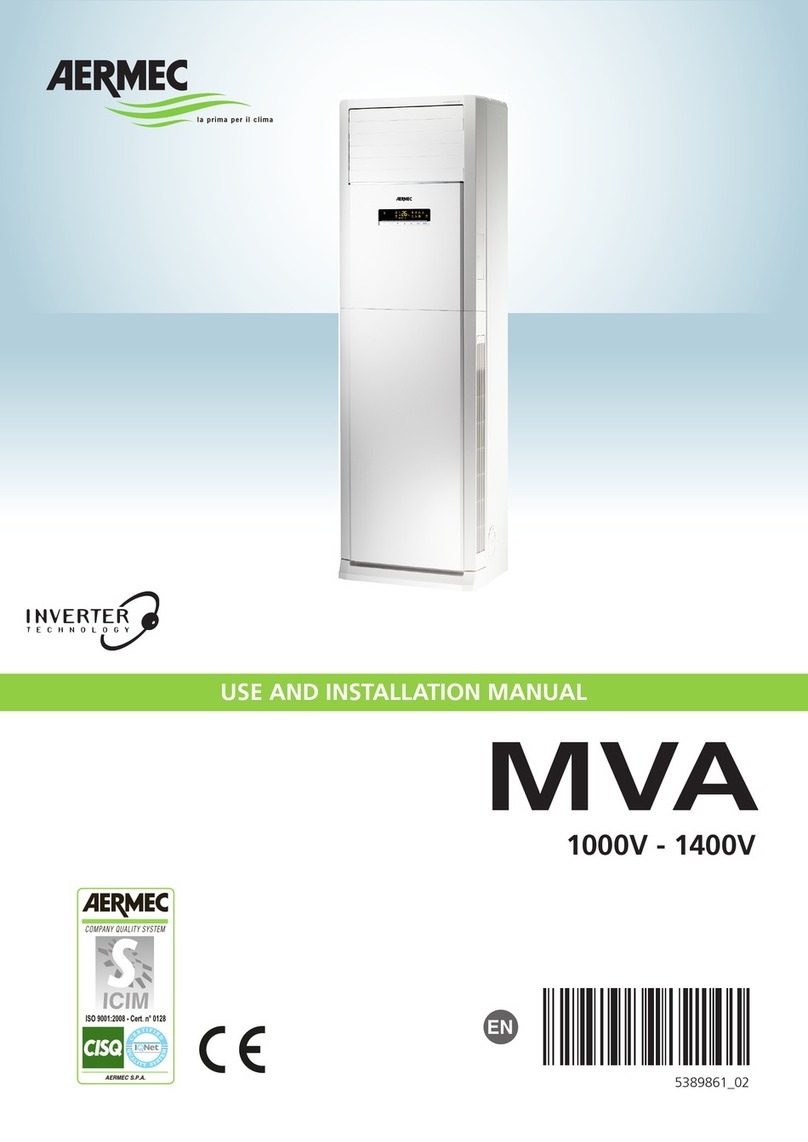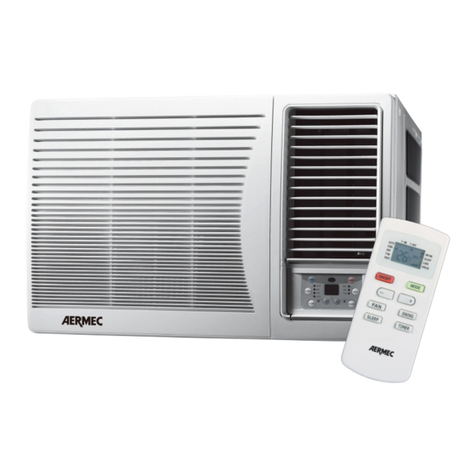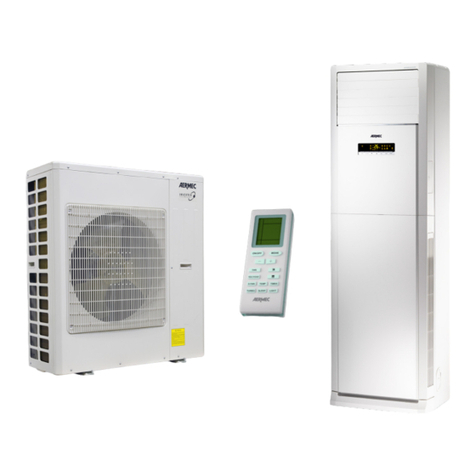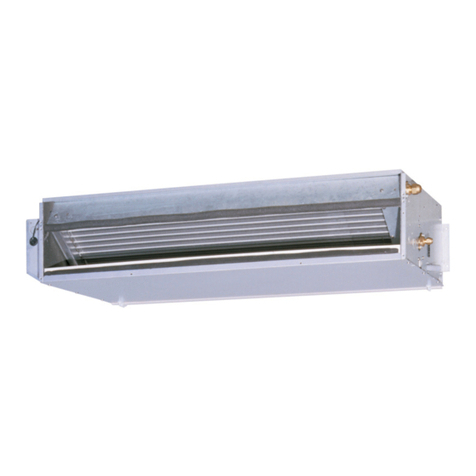7
CARACTERISTIQUES DE FONCTIONNEMENT
Les ventilo-convecteurs FCD-CT sont fournis prêts àfonctionner
en configuration standard, mais ils permettent àl'installateur de
les adapter aux besoins spécifiques de l'installation avec des
accessoires spécifiques et en personnalisant les fonctions en agis-
sant sur les commutateurs dip internes. (voir MANUEL D’INSTAL-
LATION).
La réponse aux commandes est immédiate, àl'exception des cas
particuliers.
Types d'installation
Les ventilo-convecteurs de la série FCD-CT sont conçus pour les
installations à2 tubes, dans les variantes :
- sans vanne;
- avec vanne à2 voies (sonde de l'eau en aval de la vanne);
- avec vanne à3 voies (sonde de l'eau en amont de la vanne).
Ventilation
La ventilation àtrois vitesses peut être commandée manuelle-
ment, avec le sélecteur sur la position V1, V2 et V3 (le ventilateur
est utiliséavec des cycles de marche-arrêt àla vitesse sélec-
tionnée), ou automatiquement, avec le sélecteur sur la position
AUTO (la vitesse du ventilateur est gérée par le thermostat en
fonction des conditions ambiantes).
Pour les installations munies d'une vanne et avec Sonde Eau installée
en amont de la soupape, un retard est possible (ventilation retardée
jusqu'àun maximum de 2'40") entre la mise en marche de la vanne et
la validation du ventilateur (préchauffage de l'échangeur).
Changement de saison
Le thermostat change automatiquement de saison.
Le changement de saison a lieu en fonction de température de
l'eau mesurée dans l'installation.
En fonction des réglages des Dip, il est possible d'avoir deux
modes de changement de saison sur le côtéeau :
- uniquement avec le contrôle de la température minimale/maximale;
- avec le contrôle de la température minimale/maximale et le préchauf-
fage de la batterie (ventilation retardée jusqu'àun maximum de 2'40").
Uniquement pour les installations particulières munies d'une sonde
de l'eau en aval ou d'une vanne à2 voies, le changement de saison
se fait sur le côtéair en agissant sur le sélecteur de température. Ce
réglage permet de pouvoir utiliser le ventilo-convecteur dans des
installations à2 voies préexistantes. Cela est pourtant déconseillé,
dans la mesure oùcela réduit la facilitéd'emploi du thermostat élec-
tronique (la visualisation de l'état de fonctionnement
Chauffage/Rafraîchissement au moyen de la led est faussée et dépend
de la température sélectionnée et de la température de l'air ambiant).
Contrôles de la température de l'eau
Le thermostat valide la ventilation uniquement si la température
de l'eau est appropriée au mode Chauffage ou Rafraîchissement.
Les seuils de validation de 35°C ou 39°C en chaleur et de 17°C
ou 22°C en rafraîchissement se configurent au moyen des com-
mutateurs dip.
Le panneau de commande signale la situation oùla température
de l'eau n'est pas appropriée au mode de fonctionnement pro-
grammé, par le clignotement sur la led C de la couleur fuchsia
avec le rouge ou le bleu relatif au mode actif.
Si l'installation est munie d'une vanne à3 voies, la sonde de
l'eau SW (de série) doit être remplacée par l'accessoire SW3 dont
le bulbe doit être positionnésur le tuyau de refoulement situéen
amont de la vanne.
Commande de la vanne
La vanne peut être contrôlée de deux manières différentes
- optimisée: mode recourant àla capacitédu ventilo-convecteur
en Chauffage de fournir de la chaleur même si la ventilation est
éteinte et, en Rafraîchissement, d'assurer une ventilation continue
tout en maintenant le contrôle de la température ambiante au
moyen de la vanne;
- normale:la vanne s'ouvre ou se ferme àla mise en marche ou à
l'arrêt du ventilateur.
Mode Urgence
En cas de panne de la sonde de température ambiante SA, le ther-
mostat se met en mode Urgence, ce qui est indiquépar le cligno-
tement de la led (D) jaune. Dans cette condition, le thermostat se
comporte de la manière suivante :
- Le sélecteur (A) étant sur la position OFF, la vanne eau est
fermée et le ventilateur est éteint.
- Le sélecteur (A) étant sur la position AUTO, V1, V2 et V3, la vanne
d'eau est toujours ouverte et le ventilateur exécute des cycles de mar-
che - arrêt; dans cette situation, la puissance fournie par le terminal est
commandée manuellement au moyen du sélecteur (B) : en le tournant
vers la droite, la durée du cycle Marche augmente; en le tournant vers
la gauche, cette durée diminue.
EINSATZCHARAKTERISTIK
Die Gebläsekonvektoren FCD-CT werden betriebsbereit in
Standardkonfiguration geliefert. Der Installateur kann sie durch
spezielle Zubehörteile auf die jeweiligen Anforderungen der
Anlage abstimmen und deren Funktionen kundenspezifisch mit
den internen DIP-Schaltern programmieren (siehe INSTALLA-
TIONSANLEITUNG).
Die Schaltantwort auf Befehle erfolgt außer in speziellen Fällen
verzögerungsfrei.
Anlagenausführungen
Die Gebläsekonvektoren der Serie FCD-CT sind für
Zweileitungsanlagen mit folgenden Varianten konzipiert:
- ohne Ventil;
- mit Zweiwegeventil (Wassertemperaturfühler hinter dem Ventil);
- Dreiwegeventil (Wassertemperaturfühler vor dem Ventil).
Gebläse
Das dreistufige Gebläse kann wahlweise manuell mit Wahlschalter
in den Stellungen V1, V2 und V3 (Betrieb des Gebläses durch zykli-
sches Ein-/Ausschalten mit der gewählten Drehzahl) bzw. automati-
sch mit Wahlschalter in der Stellung AUTO betrieben werden
(Regelung der Gebläsedrehzahl über den Temperaturregler in
Funktion des Raumklimas).
Bei Anlagen mit Ventil und Anordnung des Wassertemperaturfühlers
vor dem Ventil kann eine Verzögerungszeit (Verzögerung des
Gebläsebetriebs um max. 2 Min u. 40 Sek.) zwischen
Ventilumschaltung und Freigabe des Gebläses (Vorwärmen des
Wärmeaustauschers) eingestellt werden.
Umschaltung von Kühl-/Heizbetrieb
Der Regler führt die Umschaltung der Betriebsarten
Kühlen/Heizen automatisch durch.
Die Umschaltung von Kühl-/Heizbetrieb erfolgt in Funktion der
Temperatur der Wasserfüllung der Anlage.
In Funktion der Einstellung der DIP-Schalter sind zwei Arten der
Umschaltung von Kühl-/Heizbetrieb möglich:
- Nur Kontrolle der Mindest-/Höchsttemperatur;
- Kontrolle der Mindest-/Höchsttemperatur und Vorwärmen des
Wärmeaustauschers (Gebläsebetrieb bis max. 2 Min u. 40 Sek.
verzögert).
Nur bei speziellen Anlagen mit Wassertemperaturfühler hinter dem
Ventil oder Zweiwegeventil wird die Umschaltung von Kühl-
/Heizbetrieb luftseitig mit dem Temperaturschalter geschaltet. Diese
Einstellung ermöglicht die Verwendung des Gebläsekonvektors in
bestehenden Zweileitungsanlagen, wird jedoch nicht empfohlen, da
sie die Bedienungsfreundlichkeit des elektronischen Reglers ein-
schränkt (die Anzeige der Betriebsart Kühlen/Heizen mittels Led-
Dioden ist abweichend, sie richtet sich nach der gewünschten
Raumtemperatur sowie der effektiven Raumlufttemperatur).
Kontrolle der Wassertemperatur
Der Regler gibt den Gebläsebetrieb nur frei, wenn die
Wassertemperatur für die Betriebsarten Heizen oder Kühlen geeignet ist.
Die Freigabe-Schwellwerte betragen 35 °C bzw. 39 °C für Heizen und
17 °C bzw. 22 °C für Kühlen, sie werden über DIP-Schalter konfiguriert.
Auf dem Bedienteil wird durch abwechselndes Blinken der fuch-
siafarbenen Led C in den Farben Rot und Blau (je nach aktiver
Betriebsart) angezeigt, wenn die Wassertemperatur nicht zur
gewünschten Betriebsart passt.
Falls ein Dreiwegeventil installiert ist, muss der
Wassertemperaturfühler SW (Standardversion) durch Zubehörteil
SW3 ersetzt werden, dessen Kugel an der Vorlaufleitung vor dem
Ventil montiert wird.
Ventilsteuerung
Das Ventil kann auf zwei Arten angesteuert werden:
- Optimierter Betrieb: Hierbei wird die Fähigkeit des
Gebläsekonvektors genutzt, in heißem Zustand auch bei ausge-
schaltetem Gebläse Wärme abgeben zu können, und in kaltem
Zustand durch Regelung der Raumtemperatur über das Ventil eine
kontinuierliche Lüftung aufrechtzuerhalten.
- Normalbetrieb: Das Ventil öffnet bzw. schließt bei Ein- und
Ausschaltung des Gebläses.
Notbetrieb
Bei Ausfall des Raumfühlers SA schaltet der Regler auf Notbetrieb um
und zeigt dies durch Blinken der gelben Led (D) an. In diesem
Zustand ist die Schaltlogik des Reglers wie folgt:
- Bei Wahlschalter (A) auf OFF sind das Wassermengenventil gesch-
lossen und das Gebläse ausgeschaltet.
- Bei Wahlschalter (A) in Stellung AUTO, V1, V2 oder V3 ist das
Wassermengenventil geöffnet und das Gebläse führt zyklische
Ein-/Ausschaltungen durch. In diesem Fall wird die
Leistungsabgabe des Innengeräts von Hand über Wahlschalter (B)
geregelt. Drehen nach rechts verlängert die Dauer der
Einschaltung, Drehen nach links verkürzt sie.
FF
FFCC
CCDD
DD
--
--
CC
CCTT
TT
